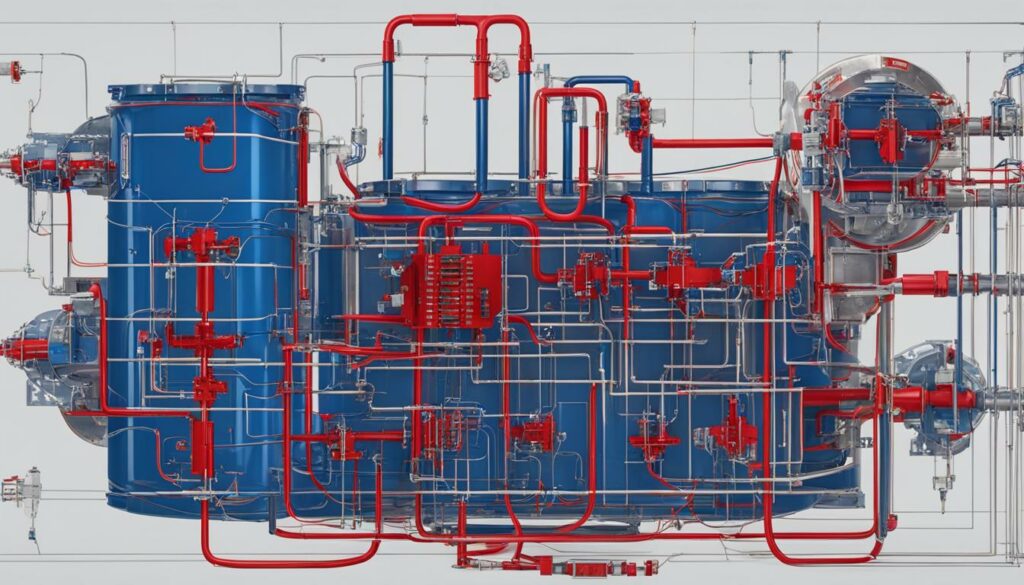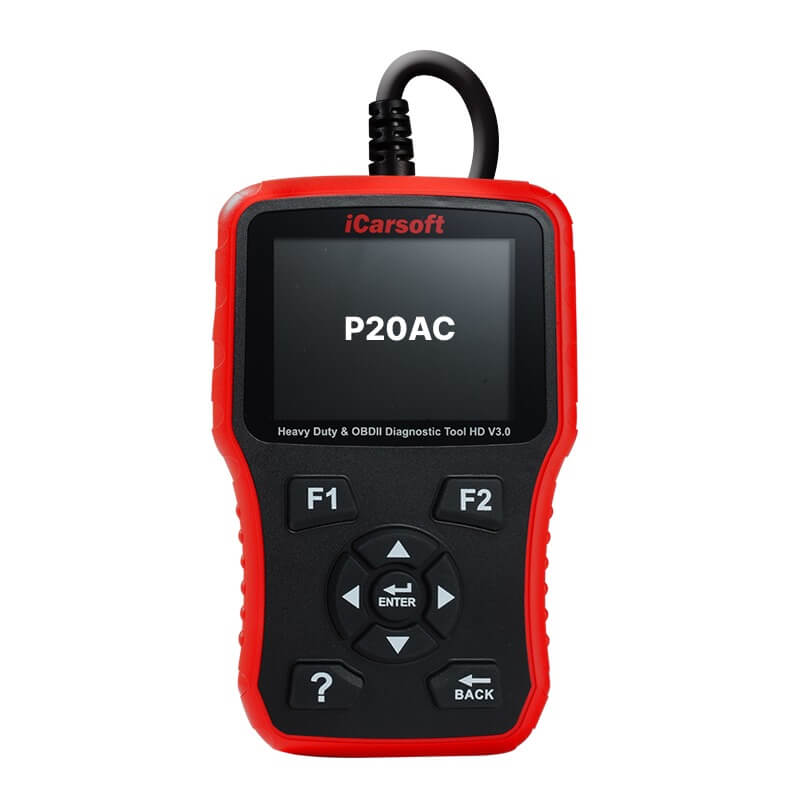P20AC – Reductant Tank Level Circuit Range/Performance
POSTED IN pcodes
The P20AC OBD-II diagnostic trouble code (DTC) refers to a reductant tank level circuit range/performance issue. This code is part of a series of generic powertrain codes that apply to all OBD-II vehicles. The code indicates that there is a problem with the circuit that controls and monitors the reductant tank level. This can affect the performance of the vehicle’s emission control system.
A reductant tank, also known as a diesel exhaust fluid (DEF) tank, is an important component of the vehicle’s emissions control system. It stores the DEF, a fluid that is injected into the exhaust stream to reduce nitrogen oxide (NOx) emissions. The reductant tank level circuit is responsible for measuring the amount of DEF in the tank and providing this information to the vehicle’s engine control module (ECM).
When the reductant tank level circuit is not operating within the expected parameters, it can trigger the P20AC code. This means that there may be a range or performance issue with the circuit. It is important to address this code promptly to ensure that the vehicle’s emission control system is functioning optimally.
Key Takeaways:
- The P20AC code refers to a reductant tank level circuit range/performance issue.
- The reductant tank level circuit controls and monitors the amount of DEF in the tank.
- A malfunctioning circuit can affect the performance of the vehicle’s emission control system.
- Prompt diagnosis and repair are important to ensure optimal vehicle performance and reduced emissions.
- Seek professional assistance for complex repairs or replacement of faulty components.
Understanding P20AC – Reductant Tank Level Circuit Range/Performance
The P20AC code corresponds to a specific issue related to the reductant tank level circuit. This technical description indicates a problem with the circuit’s range and performance, signifying that it is not functioning within the designated parameters. The reductant tank level circuit is responsible for monitoring and controlling the level of reductant in the vehicle’s emission control system.
When the P20AC code appears, it can have significant implications for the vehicle’s emission control system, potentially leading to increased emissions. While the severity of the code may vary depending on the specific circumstances, it is generally considered a moderate issue that requires attention and diagnosis.
Buy tested tuning file for Adblue / EGR / DPF / Adblue off now!
There are several symptoms associated with a P20AC code. The most common symptom is the illumination of the Check Engine Light on the vehicle’s dashboard. This indicator serves as a warning for the driver and signals the presence of a potential issue in the reductant tank level circuit.
In addition to the illuminated Check Engine Light, other symptoms may manifest. For instance, the vehicle may exhibit reduced engine performance, resulting in sluggish acceleration or a decrease in power. Furthermore, starting the vehicle could become challenging, indicating further issues with the reductant tank level circuit.
Symptoms of a P20AC code:
- Illuminated Check Engine Light
- Reduced engine performance
- Difficulty starting the vehicle
Proper diagnosis and repair of the P20AC code are crucial to ensure the vehicle’s optimal performance and compliance with emission regulations. In the following sections, we will discuss common causes and troubleshooting steps that can help resolve the reductant tank level circuit range/performance issue.
Symptoms of P20AC – Reductant Tank Level Circuit Range/Performance
| Symptoms |
|---|
| Illuminated Check Engine Light |
| Reduced engine performance |
| Difficulty starting the vehicle |

Common Causes of P20AC – Reductant Tank Level Circuit Range/Performance
When encountering the P20AC code, there are several common causes that may trigger this reductant tank level circuit range/performance issue. It is important to diagnose the underlying problem accurately to ensure effective repairs. Here are some potential causes:
- Malfunctioning Reductant Tank Level Sensor: A faulty reductant tank level sensor can provide inaccurate readings to the vehicle’s engine control unit (ECU). This can disrupt the proper functioning of the circuit and trigger the P20AC code.
- Wiring Issues: Wiring problems such as short circuits or open circuits in the reductant tank level circuit can lead to inconsistent signals between the sensor and the ECU. These electrical abnormalities can cause the P20AC code to appear.
- Faulty ECU: If the engine control unit (ECU) itself is malfunctioning or experiencing software issues, it can mistakenly interpret the signals from the reductant tank level sensor, resulting in the P20AC code.
- Reductant Tank Problems: The reductant tank itself may have mechanical issues, such as leaks or blockages, which can affect the overall performance of the circuit. This can trigger the P20AC code and impact the vehicle’s emission control system.
It is important to note that the specific cause of the P20AC code may vary depending on the make and model of the vehicle. Therefore, it is crucial to consult the vehicle’s service manual or seek professional assistance to identify the exact cause and initiate the appropriate repairs.

Note: The image above is for illustrative purposes only and may not directly represent the components associated with the P20AC code.
Troubleshooting Steps for P20AC – Reductant Tank Level Circuit Range/Performance
When encountering the P20AC code related to the reductant tank level circuit range/performance, it is important to follow a series of troubleshooting steps to identify and resolve the issue. By following these steps, you can effectively diagnose the problem and take the necessary actions for repair.
Step 1: Visual Inspection
Visually inspect the reductant tank and its related components for any signs of damage, leaks, or loose connections. Look for any worn-out wires, corroded connectors, or physical damage that may be affecting the circuit’s performance.
Step 2: Scan Tool Diagnosis
Use a scan tool compatible with your vehicle’s make and model to retrieve and clear the P20AC code. The scan tool will allow you to access the vehicle’s onboard diagnostic system, read the specific fault codes, and reset them once the issue is resolved.
Step 3: Monitoring Sensor Values
During the troubleshooting process, monitor the reductant tank level sensor values using the scan tool. These values will provide insights into the functionality of the circuit and help pinpoint any anomalies or deviations from the expected readings.
Step 4: Further Diagnostic Procedures
If the previous steps have not identified the root cause of the P20AC code, further diagnostic procedures may be necessary. This may involve utilizing advanced diagnostic tools or seeking professional assistance from a qualified technician who specializes in emission control systems.
Step 5: Repair and Component Replacement
Based on the diagnostic findings, undertake the appropriate repairs to rectify the issue. This may include repairing or replacing faulty components, such as the reductant tank level sensor, wiring harnesses, or the engine control unit (ECU), if necessary. Follow the manufacturer’s guidelines and specifications to ensure a proper repair.
Remember, if you are unsure or uncomfortable with any of the troubleshooting steps, it is always advisable to seek the assistance of a professional automotive technician who has experience in dealing with emission control system issues.
Conclusion
In conclusion, the P20AC – Reductant Tank Level Circuit Range/Performance code points to a potential issue with the reductant tank level circuit, which can have a significant impact on the vehicle’s emission control system. It is crucial to address this problem promptly to ensure optimal vehicle performance and reduce harmful emissions.
While there are troubleshooting steps that can be taken to identify and resolve the issue, it is advisable to seek professional assistance for more complex repairs. Skilled technicians have the expertise and specialized tools to accurately diagnose the problem and provide effective solutions.
In some cases, permanent removal of the P20AC code may be considered as an alternative solution. This involves uploading the Engine Control Unit (ECU) file to a specialized portal, effectively eliminating the code and preventing its recurrence. However, it is important to note that this option should only be pursued under professional guidance to ensure the integrity and safety of the vehicle.
FAQ
What does the P20AC code mean?
The P20AC code refers to a reductant tank level circuit range/performance issue. It indicates that there is a problem with the circuit that controls and monitors the reductant tank level, which can affect the vehicle’s emission control system.
How severe is the P20AC code?
The severity of the P20AC code can vary, but it is generally considered a moderate issue. Symptoms may include the illuminated Check Engine Light, reduced engine performance, and possible difficulty starting the vehicle.
What are the common causes of the P20AC code?
Some common causes of the P20AC code include a malfunctioning reductant tank level sensor, wiring issues in the reductant tank level circuit, a faulty ECU, or problems with the reductant tank itself.
What are the troubleshooting steps for the P20AC code?
The troubleshooting steps for the P20AC code may include visually inspecting the reductant tank and related components, using a scan tool to read and clear the code, and monitoring the reductant tank level sensor values. Further diagnostic procedures may be necessary to pinpoint the exact cause and determine the appropriate repairs.


